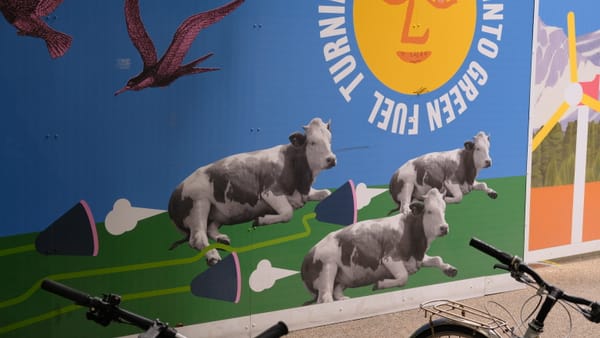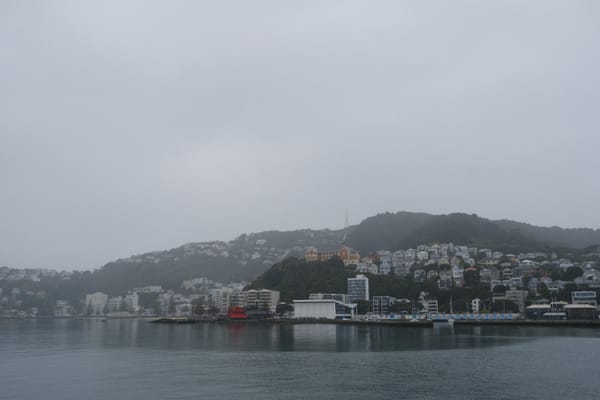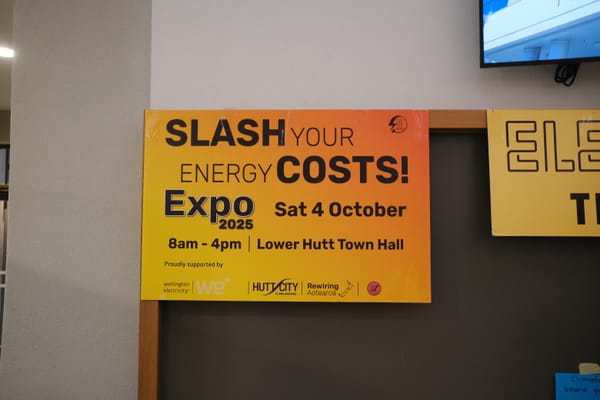Five lessons from the Climate Commission’s Christmas report
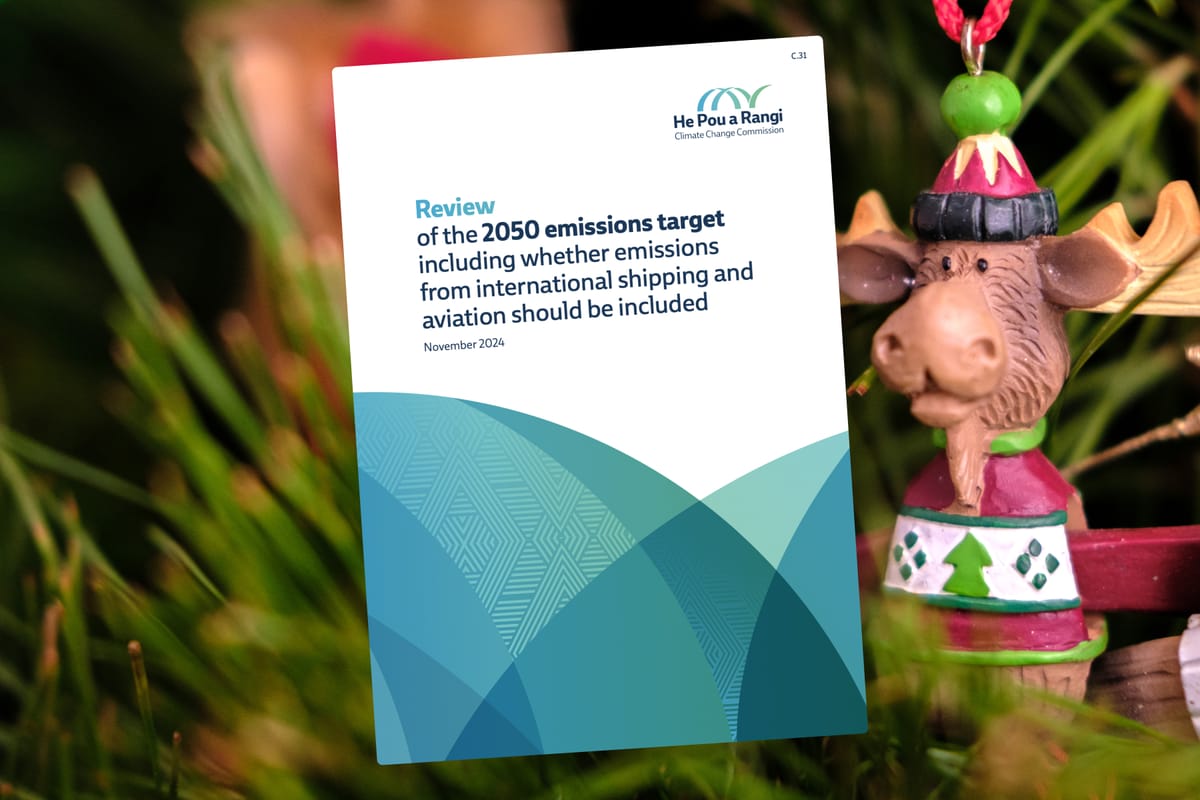
Instead of getting a lump of coal for Christmas, New Zealand’s climate community is getting a sleigh-load of interesting reports.
One document nestled under the tree is from the Climate Change Commission: it’s their recommendation to strengthen our climate goals.
This gargantuan PDF is fascinating to nerds like me, but super inaccessible to regular people.
Do not fear! I get some sort of sick joy from reading these kinds of reports. So, I digested it all to offer you five interesting takeaways.
Make sure you read the last one, it is the most important.
Our climate targets need to be more ambitious
In 2019, New Zealand passed a world-leading law promising to limit global warming to 1.5-degrees. We would do that by being carbon neutral (sort of) by 2050. That means sucking up a tonne of pollution for every tonne we pollute. There’s one annoying caveat: the law has a weaker target for methane, our biggest pollutant.
The law passed unanimously. The only person who would have voted against it, David Seymour, didn’t show up to work that day.
Five years on, we’re falling behind in our ambition. Some countries have committed to stronger goals. Unlike us, Finland aims to be carbon neutral by 2035 for every pollutant. Even better, Finland wants to start sucking out more pollution from the air than they put into it. They’re going beyond our goals by promising to start actively reversing climate change.
With that in mind, the Climate Commission has recommended we do the same with some technical recommendations.
They want to raise the floor on our methane targets, include international flights and shipping pollution in our targets, but most importantly, they want us to aim for better than carbon neutral by 2050. Their new recommendation is to suck up 20 million tonnes of carbon every year from 2050 onwards.
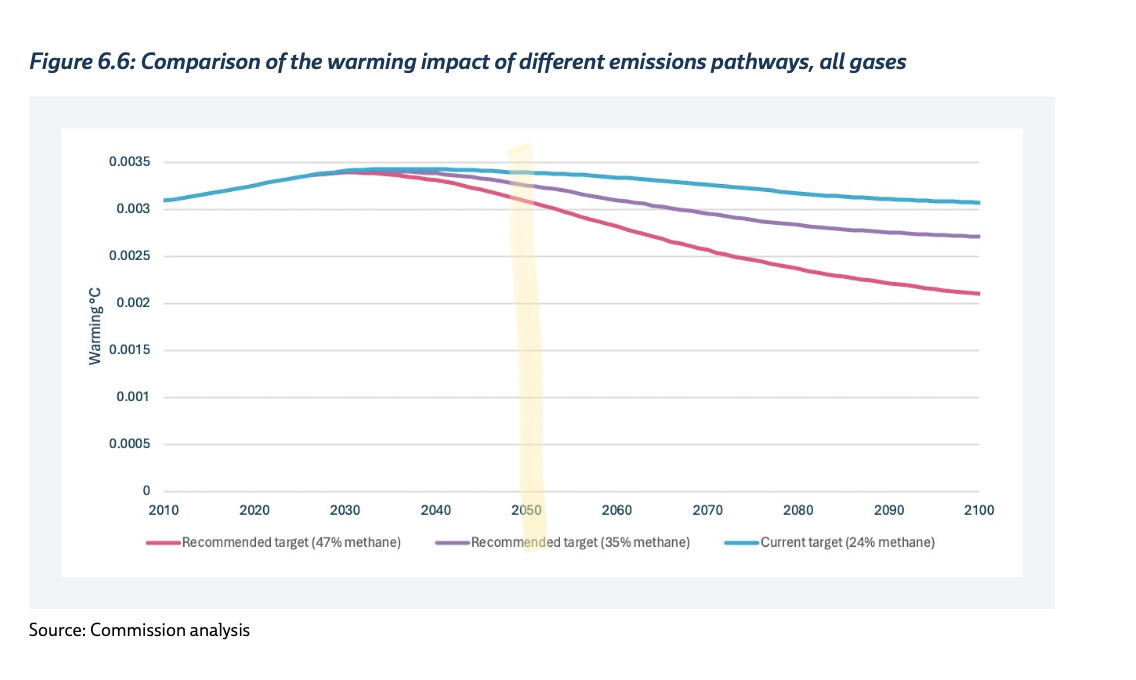
This is a great idea. If we start sucking up more carbon and halve our methane, bit by bit, the temperature will start to come back down. That’s more important than ever, because…
The world is not on track to limit rising temperatures
It’s getting harder to keep the world below 1.5-degrees of warming. That’s because world leaders (us included) are responding too slowly.
Keeping world temperatures below 1.5-degrees requires faster action than we first thought. It’s not impossible, but it requires a lot to go in our favour. Even if 1.5 degrees is not reached, every single fraction of a degree we avoid has massive benefits.
For example, Wellington is a lot better in a 1.5-degree world than the 3-degree world we’re heading for. 5,000 fewer people risk losing their home to storms. Extreme storms will happen every five years, not every two years.
If leaders warm the world by 3-degrees, I will live to see the Arctic freeze over for the last time. We can avoid that if we keep the temperature as low as possible.

The worst part is that as we get smarter about climate change, scientists are finding that extremely dangerous scenarios are more likely at lower temperatures. What were once moderate risks at 2-degrees are extremely likely events.
The science is clear: the higher the temperature goes, the more our climate becomes like living in a game of Russian roulette.
So much destruction is avoidable by acting now and sustaining action for decades to come.
Subscribe
We need both new technology and changes to society to reach it.
What the Commission recommends is achievable. With a combination of new technology and system change, we will be pulling more carbon out of the air than we put into it just ten years from now.
Their recommendation for system change sounds scarier than it actually is.
For example, Kiwi use public transport, walking, and biking for just 5% of the country’s distance traveled every year. To substantially reduce transport pollution, that needs to triple in 15 years.
Tripling!? Isn’t that… scary? It might sound impossible, but the UK has already achieved this goal.
What the report means by system change is strikingly similar to the status quo: electric cars most of the time, with useful buses, trains, and bike lanes within cities and trains available between towns. It’s more than possible.
Farming is expected to use technology like food supplements for cows and sheep to stop bacteria in their bellies creating methane gas. System change for farming might mean converting more sheep, beef, and dairy farms to growing fruit and veggies, or reducing the nation’s herd of cows and sheep (something that has been happening naturally since John Key was in power!).
We can get a long way with technology. It must be paired with a change in how things are done. We cannot pick one or the other to solve the problem.
Solving climate change comes with some great side effects
Never has a solution had so many fantastic benefits. Here are just a few the Commission outlined.
Powering cars with batteries rather than burning fuel is a huge win for health. Air pollution hurt people’s health to the tune of $2 billion a year. Electrifying everything instantly saves lives and dollars.
In fact, electrifying our cars and homes will also save New Zealanders $1 billion a year in heating and transport costs. According to Rewiring Aotearoa, a four-person, two-car household in Wellington would save $130 a week by electrifying their home.
On top of this, solving climate change does no noticeable harm to GDP. It might even improve GDP because we can avoid the eye watering costs that comes with relentless disaster clean up.
Change can be scary, but this change is worth it in more ways than one.
Subscribe
The biggest lesson? Our 2050 goal is important, but the work will continue on
I left these reports thinking a lot about my future children.
How much the world warms is a choice that comes with different, scary consequences. We’re the best equipped we’ve ever been to solve the issue. The Climate Change Commission is upping the ambition of our targets because they know we can do it.
I want to do as much as I can to ensure my future children are born into the best possible world. It’s why I write this newsletter.
As a nation, our focus has to be on ending pollution by 2050, but that is not the finish line. Once we’ve finished transitioning to a cleaner, cheaper, healthier world, something magical can begin.
The clean-up.
Eliminating pollution is the necessary step we must take so the next generation can bring temperatures back down. It will take decades, but if people across the world work together, the pollution warming our planet can be put back into the ground where it belongs.
2050 is coming up fast, but the work will continue for all of our lives. The Climate Change Commission wants New Zealand to start the clean-up as fast as we can.
We owe it to our kids to do so.



